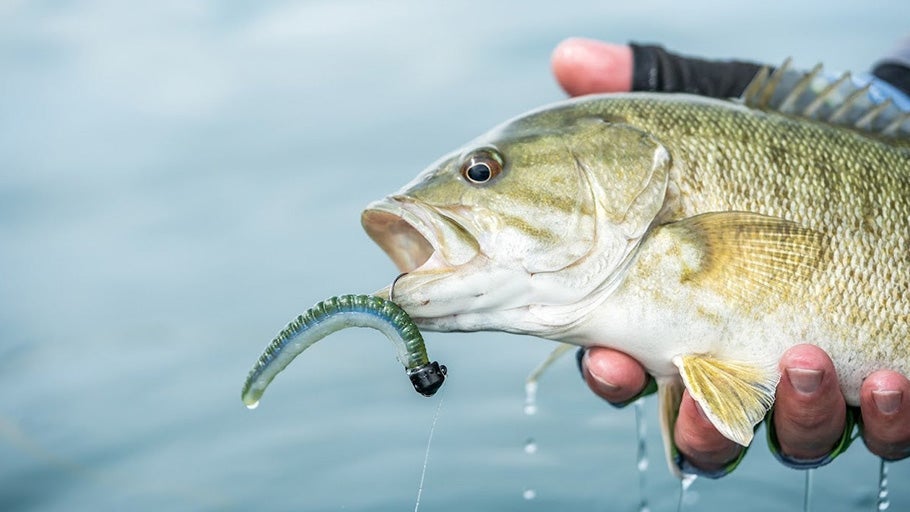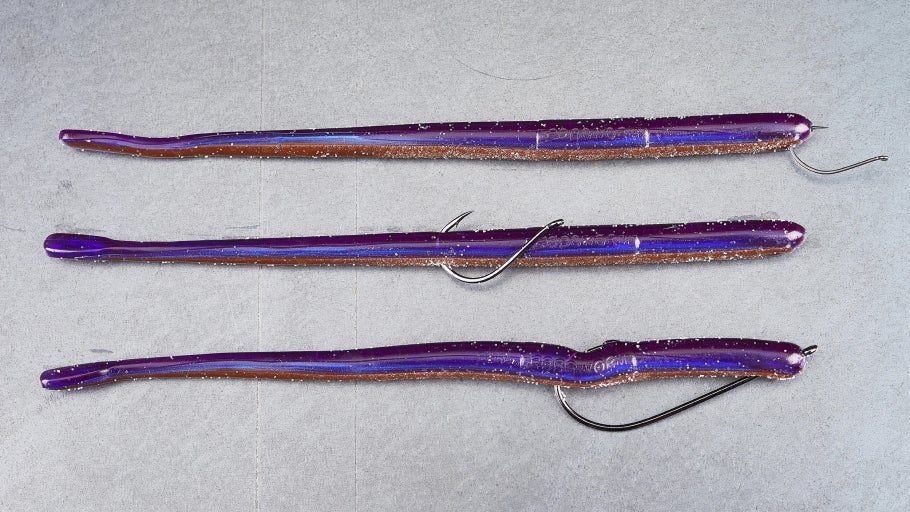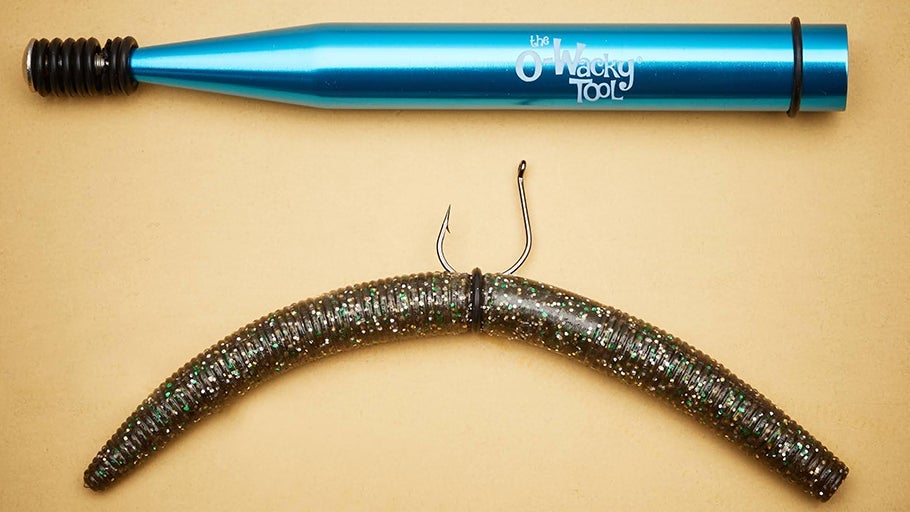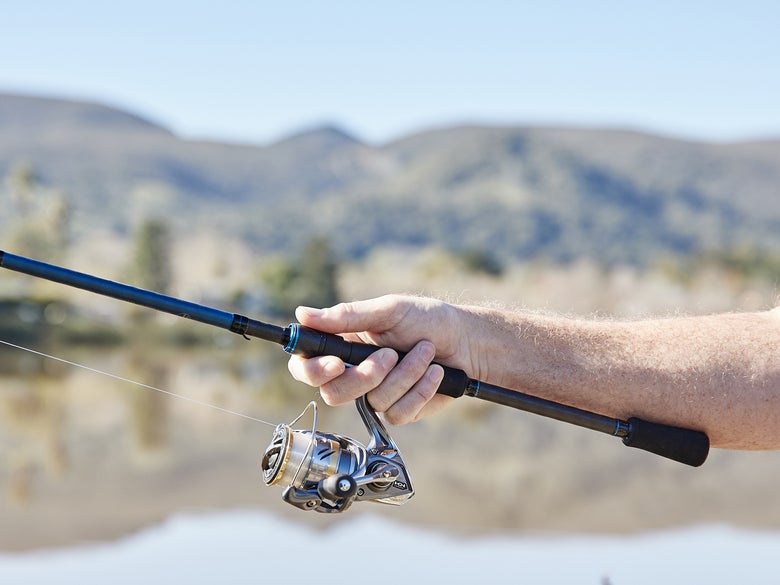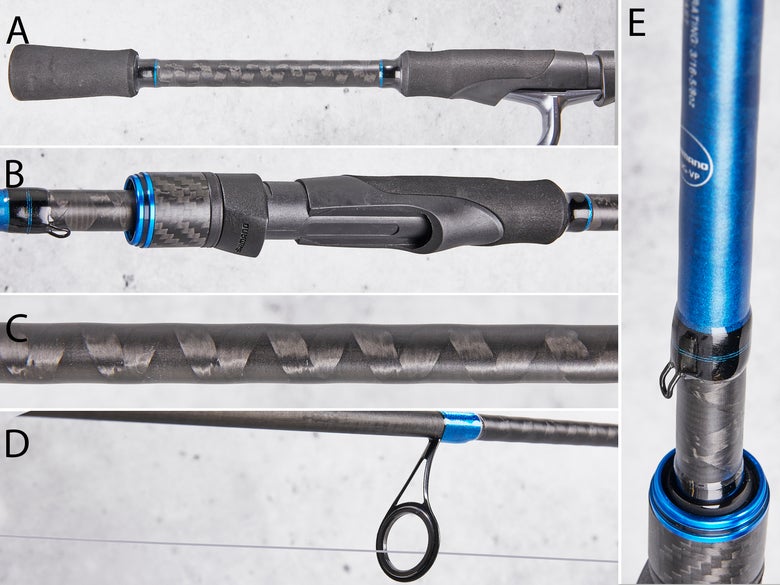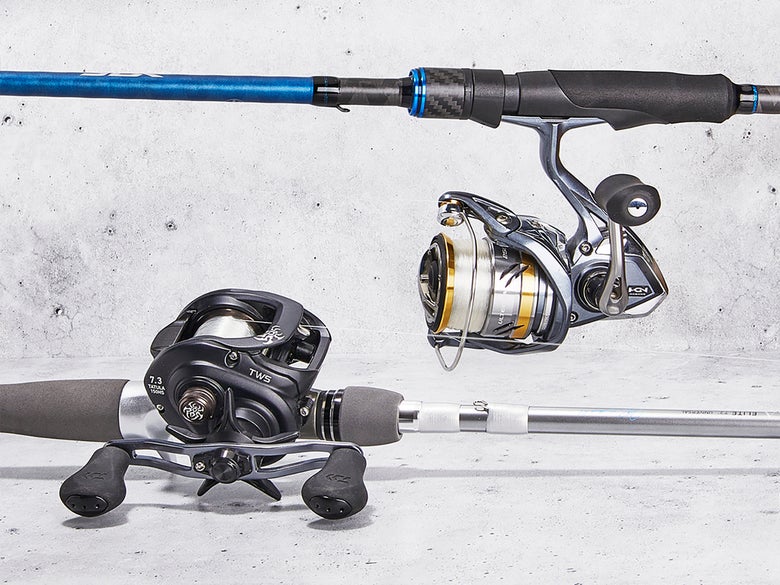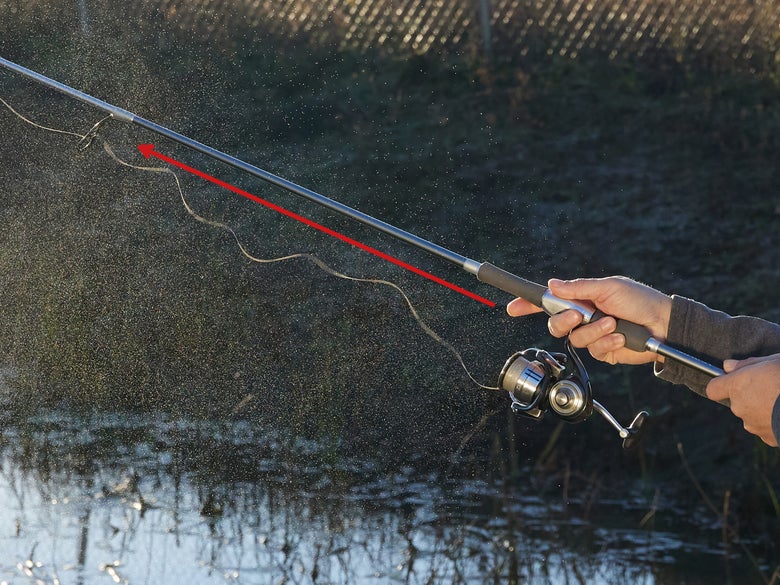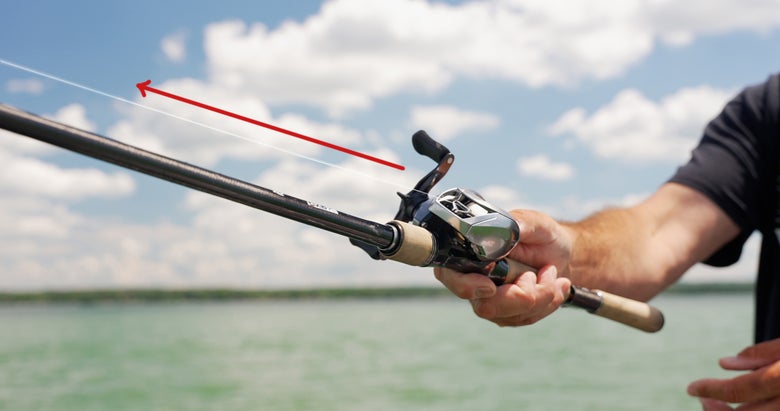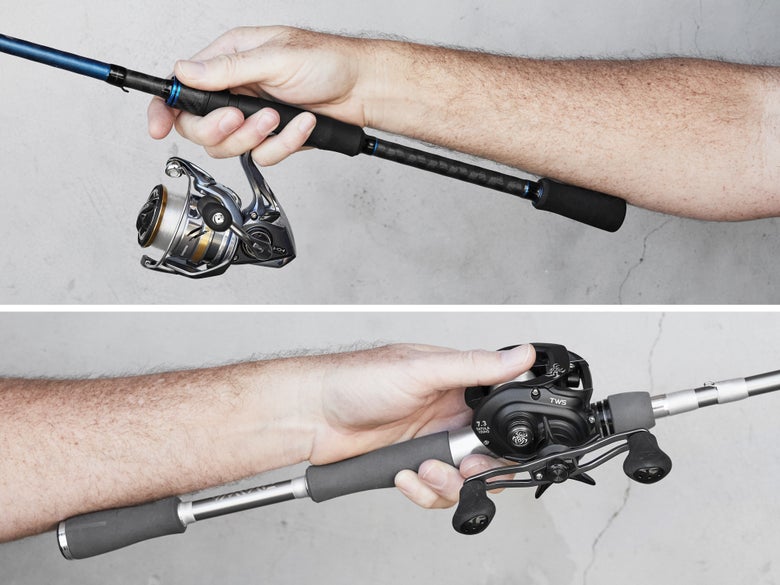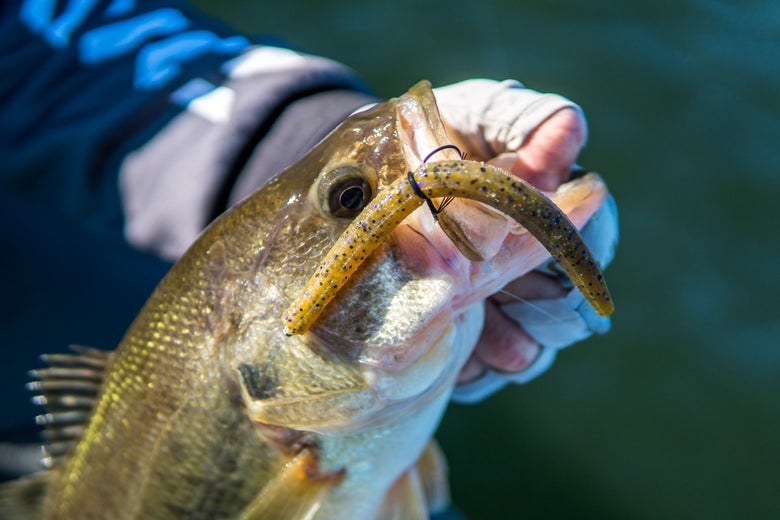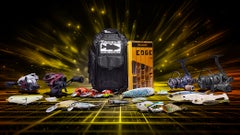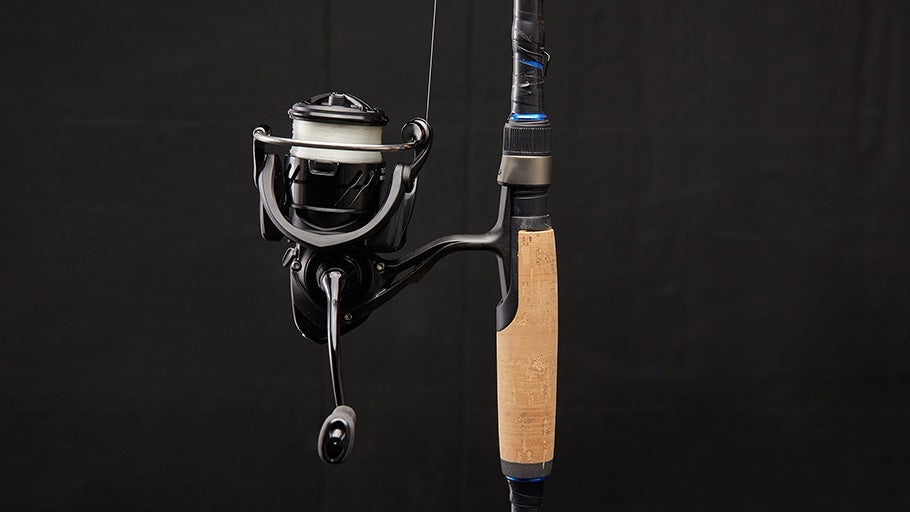
How-to Choose Your First Rod
For as long as Tackle Warehouse’s doors have been open, beginners to bass fishing have asked us: “What should I choose for my first fishing rod?” Our suggestion, and the widely accepted industry standard, is that most beginning anglers should start with a spinning rod. More specifically, a medium powered, fast tapered spinning rod from 6'6"–7'0".
While this may seem relatively straight forward to some, there’s more to this age-old riddle than meets the eye, such as understanding the differences between the two main categories of rods: spinning and casting. In this article, our expert staff will dissect those differences, provide an overview of spinning rod parts, offer beginning rod recommendations, and identify some accessories that can help you get started on your fishing journey!
Parts of a Spinning Rod
Generally speaking, fishing rods fall into two categories: spinning rods and casting rods. Although they look similar at first glance, there are some fundamental differences that set them apart from each other. To best communicate these differences we felt it is important to first touch on the main parts of a fishing rod.
A. Handle
The connection point between the rod and angler, the handle provides balance, control, and sensitivity, making it one of the most critical components of a rod. Typically made from cork, EVA, or composite materials, most bass fishing rods are either: full grip (which describes one continuous piece of material) or split grip (meaning they have a break in the material to expose the rod blank). The rod handle "A." pictured above is an example of a split grip.
B. Reel Seat
The reel seat secures the reel to the rod. For bass fishing rods, the base of the reel will nest into a groove on one end of the reel seat and be secured in-place by a nut on the other end.
C. Blank
The rod blank is the core of the rod. Whether it’s made from graphite, carbon fiber, fiberglass, or a blend of materials, the blank is a thin sheet of material that has been carefully rolled into the shape of a pole. This “blank” serves as the base for which all the other components are attached.
D. Guides
Guides do exactly what it sounds like, they guide your line from the reel to the tip of the rod. They start about two-thirds of the way up the rod with the largest guide first and become smaller and more frequent as they approach the tip of the rod.
E. Keeper
The keeper is a connection point for your lure when it is not in use. Usually attached to the bottom of your rod, keepers come in a couple different styles, but all do the same thing – keep lures from tangling.
Spinning Rods vs. Casting Rods
Now that we have a general understanding of a rod and its parts, let's discuss the difference between a spinning rod and casting rod - the most notable of which is reel orientation. On a spinning rod, the reel is designed to sit below the fishing rod, while casting rods are designed so the reel sits atop of the rod.
Spinning rods also require larger diameter guides that are set farther away from the rod blank to manage the fishing line as it exits the spinning reel in a helix-like shape.
Casting rods often feature much smaller diameter guides that are set closer to the rod blank because the fishing line comes off a casting reel in a straight line of travel.
Additional differences worth noting are the reel seat and the handle configuration. Spinning rods are shaped so that your forearm rests along the back of the rod and fingers wrap around the base of the reel and reel seat. While casting rods are designed so that the angler can grab the reel and rod in the palm of the hand with the butt of the rod supported by the inside of the forearm.
Beginning Rod Recommendations
Now that you know the parts of a rod and the differences between casting and spinning rods the next question becomes "which rod do I add to my cart?" To put it simply – a spinning rod with a medium power and fast taper from 6' 6" to 7'0" in length. Below, we have highlighted some of our best introductory spinning rods that fit those requirements!
Why do you want to start with a spinning rod?
Almost everyone being introduced to bass fishing, and fishing in general, begins with a spinning rod. Why? It’s just easier. Spinning applications are typically lighter in weight and therefore less cumbersome, less apt to complications, and for most beginning anglers, easier to learn to cast.
Why do you want a Medium Powered rod?
A rod's power describes its strength or lifting power. 90% of bass fishing spinning rods will fall into one of three strength categories: medium light, medium, or med-heavy. A medium powered rod best serves the beginning angler because it lends itself to many introductory techniques, like a dropshot, shakey head, or ned rig. It also serves as a good starting point when developing preference. If you use a medium powered rod and decide that it is under-powered or over-powered, it's easy to move up or down in power.
What is a rod taper? And why do you want a fast taper?
Before fishing rods are formed into their long, tubular shape, they start off as a flat sheet of material, whether its graphite, fiberglass, composite, etc. A rod's taper (also commonly called action) describes the angle of the material before its rolled and formed. This angle ultimately controls the flex of the rod and ultimately its properties.
Some rods are designed to only flex in the first 10% of the rod blank, then quickly transition into a stiff backbone. This would be considered an extra fast or fast action. Other rods are designed to bend all the way down to the reel seat, these rods would fall under a moderate or slow action. Each taper provides different properties, which can be advantageous for certain techniques. We suggest a fast action for two reasons: most spinning rods utilize a fast action, so it gives you a larger pool of rods from which to choose. Additionally, a fast action works well with a lot of the techniques that most new bass anglers will employ, like a neko rig, Texas-rig, or split shot.
Why 6'6" to 7'0"?
We provide this specific length range for two reasons. The first of which is versatility. Most rods in this range can be used for a wide-range of applications, once you step outside of this range, spinning rods become a little more specialized. The second reason we offer this range is availability. A large portion of rods on the market fall under these lengths, so it reaches across a broad range of brands and price points.
One thing to note when choosing rod length is that there is typically a correlation between the angler's height and their preferred rod length. While there's no one-size-fits-all rule when it comes to selecting rod length, if you consider yourself "tall" you will likely prefer a rod on the longer end of this spectrum. Conversely, if you consider yourself "short" you might be more comfortable with a model closer to 6'6".
How much should I spend on my first fishing rod?
The short answer: whatever fits your budget. However, like everything in life, not all bass fishing rods are created equal. Rods vary drastically by price, materials and components, so how do you sort through the noise to identify the right rod for you? In most cases, the price point is a direct reflection of components, raw materials, and craftsmanship. It’s not uncommon for less expensive rods to be mass produced using cutting-edge machinery, while higher priced fishing rods tend to be handmade, one-at-a-time by a highly specialized team of rod builders. When you spend more money on a fishing rod, typically, you can expect: a lighter weight, increased sensitivity, better balance, higher quality components, tighter tolerances, and a better warranty backing.
Accessory Guide
Reels
For most introductory tactics, a spinning reel in the 2000–3000 size range is the perfect starting point. There’s a wide assortment of reels that fit this bill, so pricing will be the deciding factor for your first setup. Below are some of our suggestions to get you started.
Line
Now that we have your rod and your reel picked out, let’s spool it up with line. The quickest and simplest way to get started is to fill your reel completely with monofilament or fluorocarbon. To see how to spool your spinning reel please watch the video below. Once you become comfortable with either of these options and want to bump up your sensitivity or performance, try implementing a braid backing with a fluorocarbon leader.
Baits and Terminal Tackle
Tackle Warehouse prides themselves on providing anglers with the widest selection of baits for bass anglers, including the beginner. Most anglers begin their bass fishing journey with one of these worm-based techniques: drop shot, Ned rig, weightless wacky worm. These techniques are effective and quick to learn, but don’t be misled by their simplicity, professional anglers have born entire careers around perfecting them. Check out some of the most popular soft bait categories for spinning rod applications below!
Final Thoughts
Your first fishing rod is a big deal, or at least it can be to anyone who ends up enjoying fishing as much as we do. Hopefully this guide has helped answer some of the questions regarding rod choice and brought clarity to getting started. If you are curious about other techniques, gear, or fishing tips, make sure to check out the rest of the Learning Center.
Related Articles


